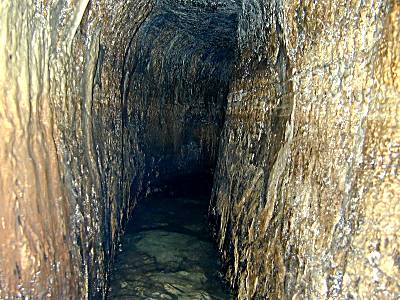Hezekiah's Tunnel

The Tunnel
Introduction:
A 1750-foot (530m) tunnel carved during the reign of Hezekiah to bring water from one side of the city to the other, Hezekiah's Tunnel together with the 6th c. tunnel of Euphalios in Greece are considered the greatest works of water engineering technology in the pre-Classical period.
Had it followed a straight line, the length would have been 1070 ft (335m) or 40% shorter.
A. The Construction
2 Kings 20:20 "As for the other events of Hezekiah's reign, all his achievements and how he made the pool and the tunnel by which he brought water into the city..."
2 Chron. 32:30 "It was Hezekiah who blocked the upper outlet of the Gihon spring and channeled the water down to the west side of the City of David."
B. Recent Excavations
Discovered in modern times by Edward Robinson (1838), cleared by Montague Parker's team (1909-11), work continues on the Tunnel and related passageways under the direction of Ronny Reich (1995-).
Recent work has uncovered some of the archaeological tools and equipment abandoned by the Parker expedition.
C. The Meeting Point: Why is the tunnel S-shaped?
R. A. S. Macalister said the tunnel was a "pathetically helpless piece of engineering."
Henry Sulley in 1929 first suggested that Hezekiah's tunnel followed a natural crack in the rock.
Dan Gill argues that the two crews of diggers followed a natural karstic dissolution channel.
D. The Location of the Siloam Inscription
"[...when] (the tunnel) was driven through. And this was the way in which it was cut through: While [...] (were) still [...] axe(s), each man toward his fellow, and while there were still three cubits to be cut through, [there was heard] the voice of a man calling to his fellows, for there was an overlap in the rock on the right [and on the left]. And when the tunnel was driven through, the quarrymen hewed (the rock), each man toward his fellow, axe against axe; and the water flowed from the spring toward the reservoir for 1200 cubits, and the height of the rock above the head(s) of the quarrymen was 100 cubits."
By Steve Rudd: Contact the author for comments, input or corrections.

Go To Start: WWW.BIBLE.CA

